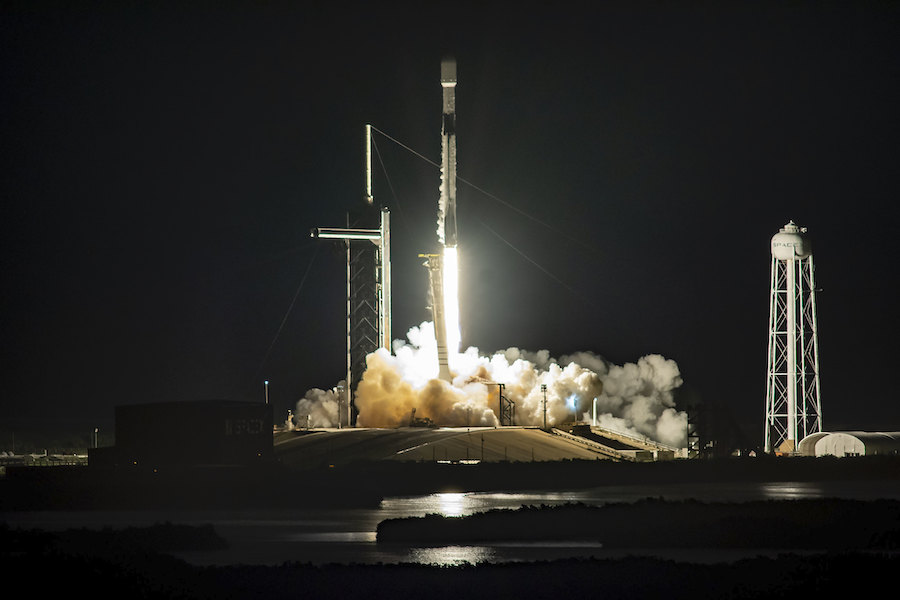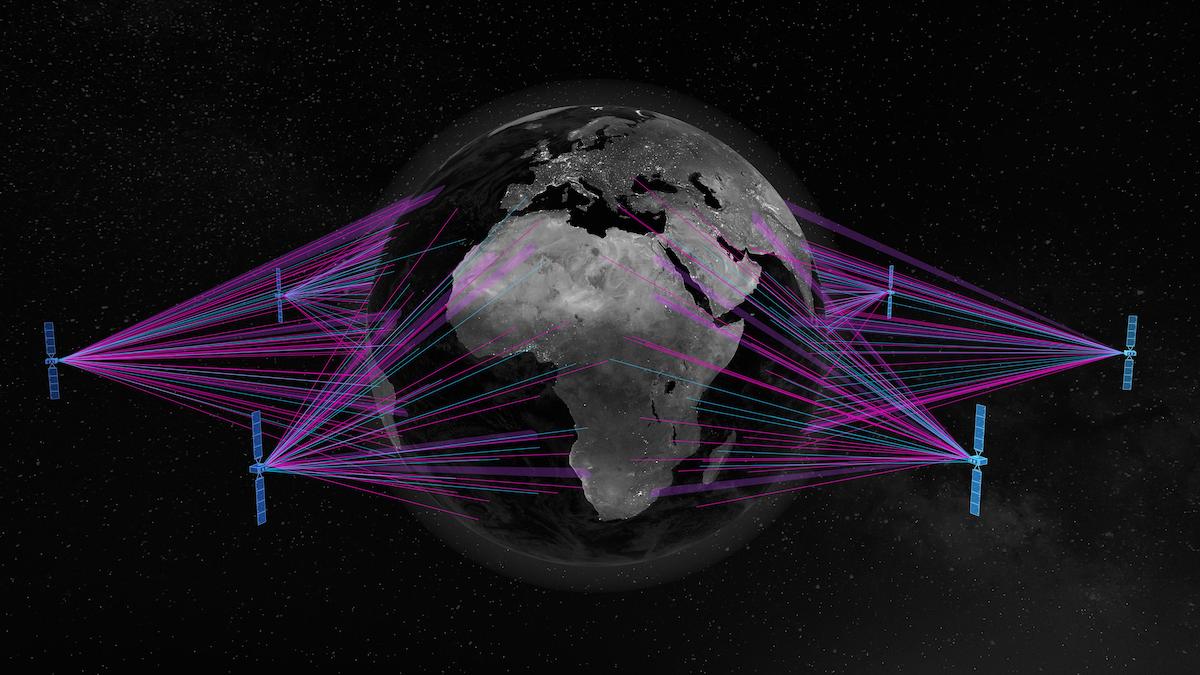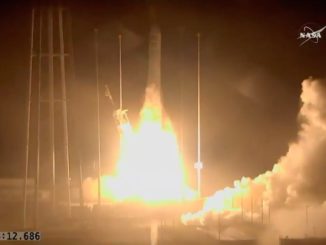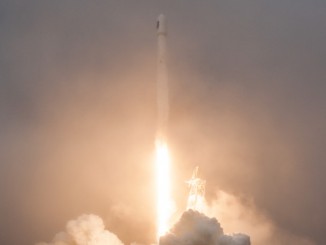
SES announced Thursday it has tapped SpaceX for two additional Falcon 9 rocket launches from Cape Canaveral to deliver more Boeing-built O3b mPower broadband satellites into orbit, adding to a pair of Falcon 9 flights ordered by SES last year to launch the first batch of mPower platforms beginning in late 2021.
With the two launches ordered from SpaceX Thursday, SES has reserved at least five Falcon 9 missions for launches in the next few years.
Based in Luxembourg, SES owns one of the largest fleets of commercial communications satellites in geostationary orbit more than 22,000 miles (nearly 36,000 kilometers) over the equator, beaming television, data and Internet services to customers around the world.
SES’s O3b network provides Internet connectivity to ships, airplanes, developing and island nations, and other customers on-the-go using a fleet of 20 satellites flying in a unique equatorial medium Earth orbit at an altitude of more than 5,000 miles, or 8,000 kilometers.
SES ordered seven upgraded O3b satellites from Boeing in 2017 to expand the capacity supplied by the network’s original 20 spacecraft, which were built by Thales Alenia Space in France. The satellite operator last year booked two Falcon 9 launches with SpaceX to deploy the next seven O3b satellites in orbit.
The upgraded Ka-band satellites will form SES’s O3b mPower network. SES says a single O3b mPower satellite, each with the ability to generate more than 4,000 user beams, will have 10 times the capacity of the current O3b satellite constellation.
The initial seven satellites are expected to provide 10 terabits of total throughput, delivering between 50 megabits per second to several gigabits per second of capacity to a single user. But SES expects users’ appetites for satellite broadband to grow, and the company ordered four more O3b mPower satellites from Boeing earlier this month.
SES announced Thursday that four Falcon 9 rockets will launch the block of 11 O3b mPower satellites. That’s an additional two launches over the pair of Falcon 9 missions SES reserved last year.
Based on Boeing’s 702X satellite platform, the first group of O3b mPower satellites, each weighing nearly 2 tons, will launch on a Falcon 9 rocket from Cape Canaveral in late 2021.
“O3b mPower is the cornerstone of our multi-orbit, cloud-enabled, high-performance network that will serve our enterprise, mobility and government customers into the next decade, and we are merely a year away from its first launch,” said Steve Collar, CEO of SES. “We have a strong and long-standing partnership with SpaceX and we are excited to add the launches of additional O3b mPower satellites that will drive higher throughput, greater efficiency and substantially more bandwidth to our industry-leading network.”

The first 20 O3b satellites launched on five Soyuz rockets from French Guiana between 2013 and 2019 on missions procured from Arianespace.
SES is one of SpaceX’s top commercial customers.
The satellite operator launched a payload in 2013 on SpaceX’s first Falcon 9 launch to geostationary transfer orbit, the standard drop-off point for telecom spacecraft heading for operating positions more than 22,000 miles over the equator.
SES also launched a satellite on SpaceX’s first launch of a reused Falcon 9 rocket booster in 2017. The company flown satellites on six dedicated Falcon 9 launches, and has reserved at least five more Falcon 9 launches over the next few years, including the four O3b mPower missions.
In conjunction with the announcement Aug. 7 that SES will purchase four more O3b mPower satellites from Boeing, the companies said they will partner to offer O3b broadband services to the U.S. military and other government customers.
“As SES expands the O3b mPower constellation from seven to 11 satellites, Boeing and SES have agreed to collaborate to develop commercially-based service offerings and capabilities for the U.S. government.” Collar said in an Aug. 7 statement. “We have built our network around a multi-orbit, multi-frequency, high-throughput, flexible and open architecture increasingly of value to government users.”
Email the author.
Follow Stephen Clark on Twitter: @StephenClark1.



